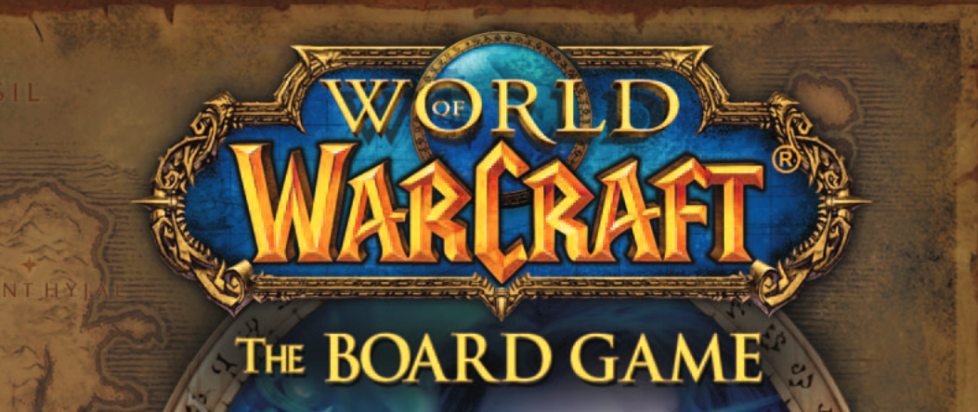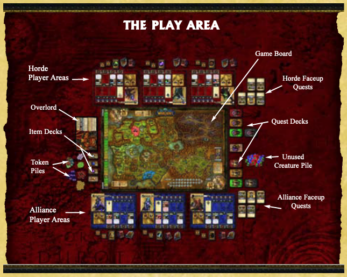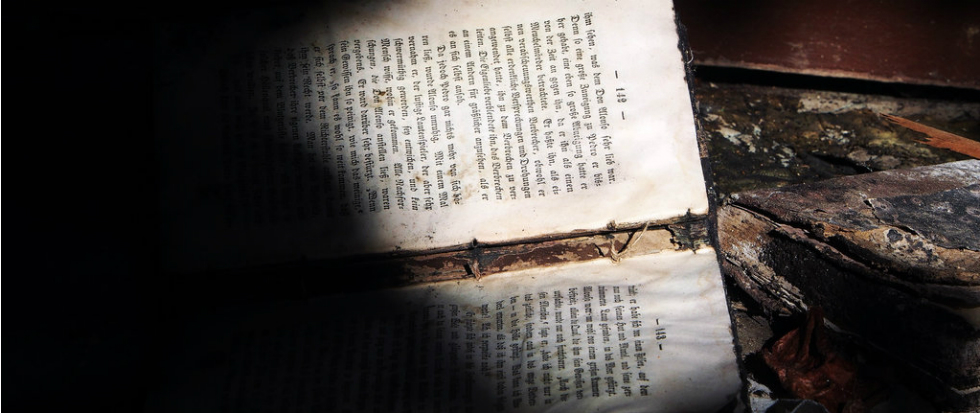
A Whole New World of Warcraft: The Board Game
I see board games in the store and they always look so cool and then I buy them and bring them home, I’m so excited to open them, and then I play them, like, twice… This column is dedicated to the love of games for those of us whose eyes may be bigger than our stomachs when it comes to playing, and the joy that we can all take from games, even if we don’t play them very often.
Over the years, there have been numerous attempts to bring World of Warcraft to the tabletop – albeit, not as many as you might expect, given the MMO’s massive popularity and its preexisting proximity to the fantasy TTRPG space. There have been a couple of efforts to integrate WoW into 3e Dungeons & Dragons, not to mention at least one collectible card game and a short-lived collectible miniatures game from 2008. There have also been several board games, with the most recent being 2021’s Wrath of the Lich King from Z-Man Games, which incorporates mechanics from the popular Pandemic game series into a simplified version of World of Warcraft.
Of these various games, one of the most ambitious – and also pretty much the first – was World of Warcraft: The Board Game, released in 2005 by Fantasy Flight. For context, World of Warcraft the computer game had just been released the year before. Within three years, Fantasy Flight had largely abandoned WoW: The Board Game in favor of a streamlined version called World of Warcraft: The Adventure Game, which more closely resembles Runebound with WoW characters and place names.
The 2005 board game is nothing nearly so modest, however. It comes in a box that is almost fully two feet long and boasts a whopping 136 plastic miniatures representing various characters and critters from the game, including wildkin, ogres, and, of course, murlocs. Not to mention all the countless cards and tokens you would expect. The board unfolds to a massive 22×33 inches, depicting just one small portion of Azeroth – but remember that World of Warcraft itself was much smaller in those days than it is nearly two decades later.
If you go online, say to BoardGameGeek.com, you can find plenty of pictures – many of them, from the photo quality and the sartorial choices, clearly throwbacks to the beginning of the 21st century – of people setting up their massive games of World of Warcraft, with the innumerable brightly-colored miniatures and the cartographic board making it all seem reminiscent of a fantasy game of Risk.
So, why did World of Warcraft: The Board Game not stay in print longer? Well, for starters, it was probably fairly expensive to produce, with its nearly Gloomhaven-sized box and lots of little bits and bobs. More to the point, though, the game was… polarizing, to say the least. One of the more salutary reviews from back closer to when the game was first released calls it “worthy of your love and hate.” Others are less kind.

The general consensus seems to be that WoW: The Board Game does some things extremely right, with the character leveling system being singled out for nearly universal praise. However, popular opinion also suggests that it does some things equally wrong, with one of the notable complaints being the game’s length, which can clock in at 4 hours or more. (The back of the box suggest 2-4 hours, which is already a long time, while the estimate on BoardGameGeek.com splits the difference at 180 minutes.)
Why does it take so long? Part of the answer lies in the faction divisions baked into World of Warcraft itself. For those who have never played the game, it is divided between Alliance and Horde, with different character options falling under the two umbrellas. So, humans and dwarves and night elves and gnomes, for example, are all Alliance, while orcs and trolls and undead and so on are Horde. When playing the board game, you not only choose a character from one of the groups available in WoW at the time of the game’s release, you also choose one of these two factions, which dictates your character options.
This means that the game is essentially divided into two teams, each of which acts in tandem to try to complete quests and win the game. So, all the Alliance players go together on a shared turn, and all the Horde players do the same. Meaning that there’s a huge chunk of downtime after each turn while the other team goes. Read up about the game online, and you’ll find one piece of etiquette repeated time and again – use this downtime to plan your next turn, so that the other players don’t have to spend as much time waiting for you. You’ll also find more sarcastic suggestions, such as, “Go make yourself a sandwich.”
So, that’s a big part of why World of Warcraft: The Board Game takes so long to play. It’s also just a big, complicated game with a lot of moving parts. Oh, and the game lasts for 30 “faction turns” – so each faction gets 15 turns. Combat alone is a several-step process, albeit one built around a fairly interesting engine. And you’ll be doing a lot of combat. In fact, that, rather than the game’s length, may be its actual downfall.
“But the biggest drawbacks [sic] is simple once you think of it,” writes user Simon Hammar in a popular review on BoardGameGeek.com. “All the quests are killing monsters. Yep. Every single one. EVERY SINGLE ONE. And all quests are shown and known beforehand. You draw the quest cards, which invariably reads ‘kill these monsters.’ You place monsters on the map. Go there, kill. Draw a new quest, which is… monsters to kill.”
Is that, perhaps, a relatively accurate depiction of what playing World of Warcraft the computer game might feel like to some people? Sure. Does it make for an especially dynamic or compelling board game experience? Not as much.
———
Orrin Grey is a writer, editor, game designer, and amateur film scholar who loves to write about monsters, movies, and monster movies. He’s the author of several spooky books, including How to See Ghosts & Other Figments. You can find him online at orringrey.com.





